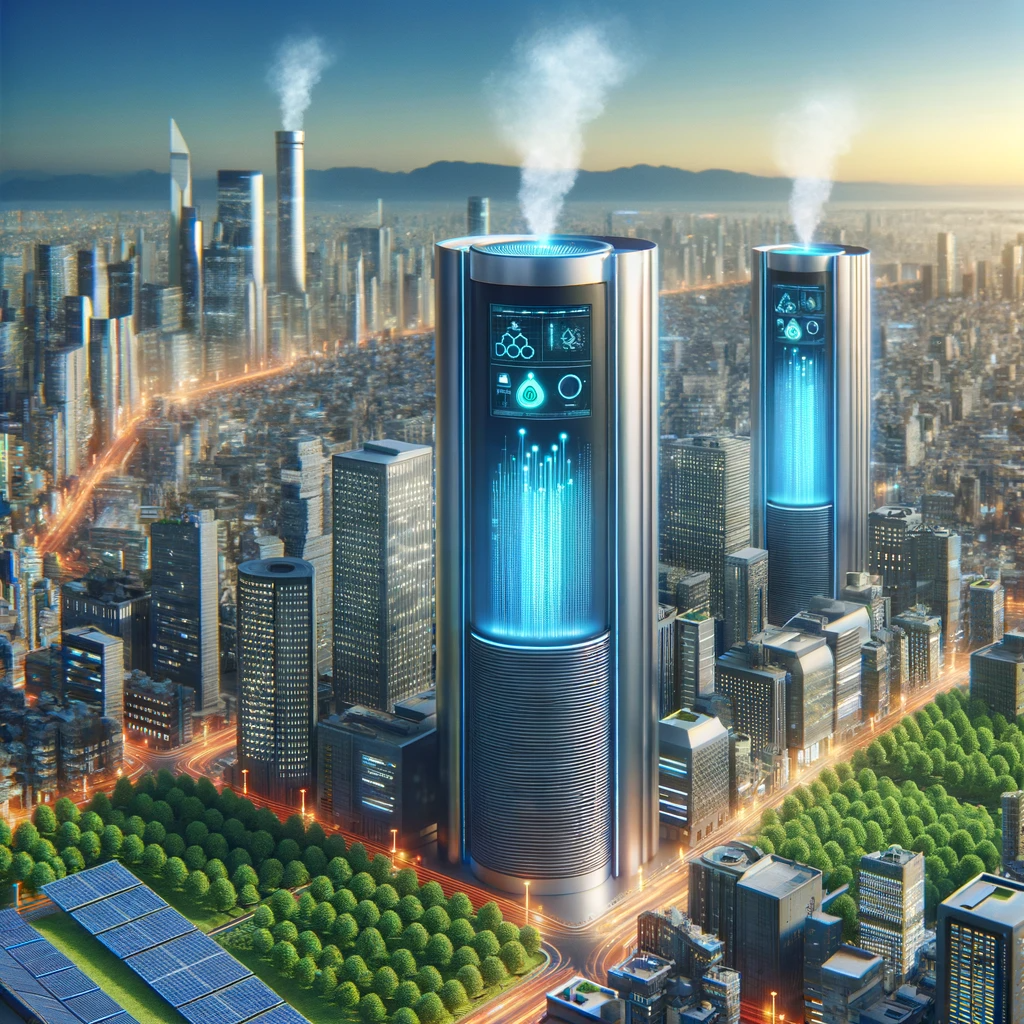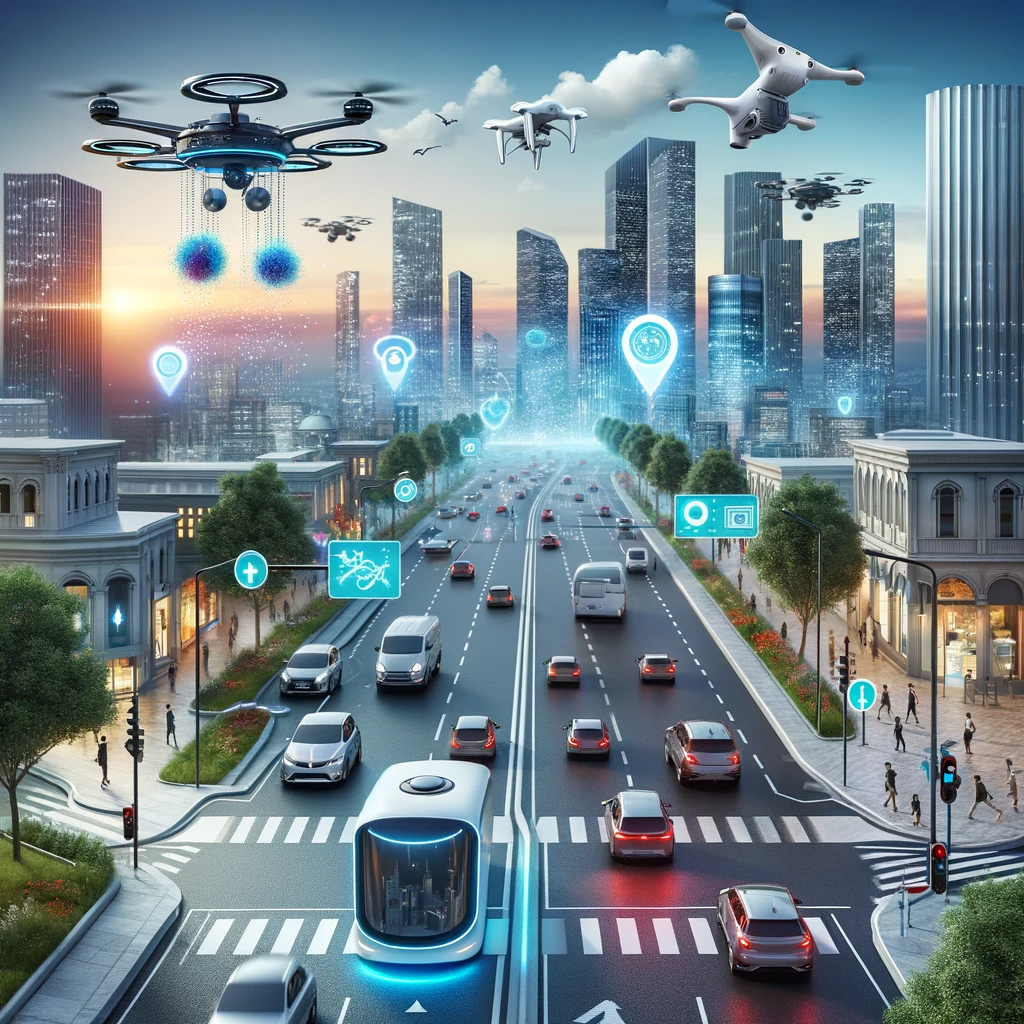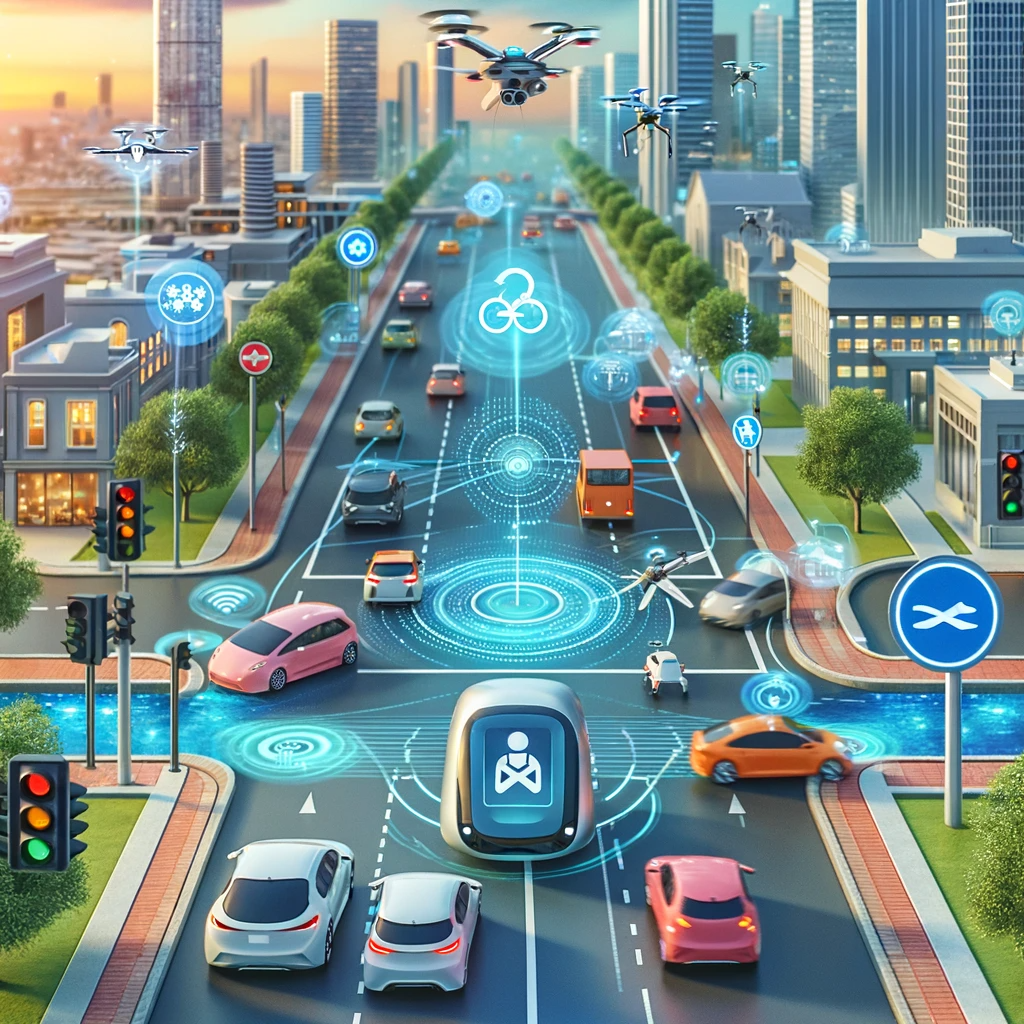Urban air pollution stands as an undeniable and pervasive challenge of our time. As the world’s population congregates in cities at an unprecedented rate, the air we breathe in these urban landscapes is increasingly laden with pollutants that pose a grave threat to human health and the environment. The insidious effects of urban air pollution ripple through communities, affecting the most vulnerable among us while exacting a heavy toll on public health systems and economies.
In the face of this formidable adversary, there arises a beacon of hope—a technological frontier that promises to revolutionize the way we combat urban air pollution: Artificial Intelligence (AI). AI-driven technologies are not mere tools; they are the vanguard of innovation in the quest for cleaner, healthier urban environments.
This article embarks on a journey to explore the profound impact of AI-driven technologies on urban air pollution. It delves into the promise of AI in monitoring, analyzing, and mitigating pollution levels in cities, offering a glimpse into the transformative potential of data-driven insights and predictive modeling. As we navigate the landscape of AI and air quality, we will also confront the challenges and ethical considerations that this technological evolution brings to the fore.
The pressing question at the heart of this exploration is whether AI-driven technologies can indeed help mitigate urban air pollution, transforming our cities into havens of clean air and vibrant health. The answer, as we shall discover, lies at the intersection of innovation, responsibility, and a shared commitment to breathe new life into our urban spaces.
Understanding Urban Air Pollution
Urban areas across the globe are grappling with a growing menace – urban air pollution. This persistent problem arises primarily from industrial activities, vehicular emissions, construction dust, and various other sources that release pollutants into the atmosphere. In this section, we will delve into the fundamentals of urban air pollution, examining its sources and the extensive damage it inflicts upon both human health and the environment.
Defining Urban Air Pollution
Urban air pollution, often referred to as urban smog, is characterized by the presence of harmful pollutants in the air within densely populated areas. These pollutants encompass a wide range of substances, including particulate matter (PM2.5 and PM10), nitrogen oxides (NOx), sulfur dioxide (SO2), volatile organic compounds (VOCs), and carbon monoxide (CO). These pollutants are released into the atmosphere primarily as a result of human activities, particularly those related to industry and transportation.
Health Impacts
One of the most pressing concerns associated with urban air pollution is its profound impact on public health. Prolonged exposure to polluted air is linked to a range of health issues, including respiratory diseases such as asthma and bronchitis, cardiovascular problems like heart attacks and strokes, and even premature death. Vulnerable populations, such as children, the elderly, and individuals with preexisting health conditions, are particularly at risk.
Environmental Impact
Beyond its effects on human health, urban air pollution also exerts a significant toll on the environment. Pollutants released into the atmosphere can lead to the formation of ground-level ozone and smog, which can harm plant life, damage ecosystems, and contribute to climate change. Moreover, acid rain, which results from the emission of sulfur dioxide and nitrogen oxides, can have detrimental effects on soil quality and aquatic systems.

Role of Traditional Monitoring and Mitigation Methods
In the battle against urban air pollution, governments and environmental agencies have relied on traditional methods for monitoring and mitigating the problem. While these methods have played a crucial role, they come with their own set of limitations.
Current Approaches
The conventional approach to monitoring urban air quality involves the use of stationary monitoring stations placed strategically throughout urban areas. These stations measure the concentration of various pollutants and provide valuable data for assessing air quality. Additionally, regulatory measures such as emission standards and industrial permits are used to control pollution sources.
Limitations
However, these traditional methods have significant limitations. Stationary monitoring stations provide data at specific locations, which may not accurately represent the air quality in all parts of a city. They are also limited in their ability to provide real-time data, making it challenging to respond promptly to sudden spikes in pollution levels. Furthermore, these methods do not always account for the dynamic nature of urban environments, where pollution sources and patterns can change rapidly.
The Promise of AI in Air Quality Monitoring
Amid these challenges, the emergence of artificial intelligence (AI) offers a ray of hope in the fight against urban air pollution. AI-driven technologies have the potential to revolutionize air quality monitoring and provide more accurate, timely, and comprehensive data.
AI-Driven Sensors
At the forefront of this technological transformation are AI-driven sensors and Internet of Things (IoT) devices. These devices can be strategically placed throughout urban areas to continuously collect data on air quality. Unlike stationary monitoring stations, AI-driven sensors offer real-time data from various locations, enabling a more dynamic understanding of pollution levels. This granular data can be invaluable for identifying pollution sources and trends.
Data Analysis
However, the true power of AI lies in its ability to analyze vast amounts of data swiftly and accurately. Machine learning algorithms can process data from sensors, satellite imagery, weather conditions, and historical data to identify patterns and correlations that might elude human analysts. This capability allows AI to detect pollution hotspots, trace pollution back to its source, and predict future air quality trends.
Early Warning Systems
Moreover, AI can be harnessed to develop early warning systems for urban air pollution. By analyzing real-time data, AI algorithms can detect sudden spikes in pollution levels and issue alerts to relevant authorities and residents. These early warnings can be instrumental in implementing timely interventions to mitigate the effects of air pollution, such as restricting vehicular traffic or alerting vulnerable populations to take precautionary measures.
As we explore further, we will see how AI-driven technologies hold promise not only in monitoring air quality but also in actively contributing to the reduction of urban air pollution through innovative solutions.
AI-Powered Solutions for Air Pollution Mitigation
The potential of AI in the realm of air quality doesn’t stop at monitoring and analysis. AI-powered solutions are being developed to actively combat urban air pollution.
Emission Reduction
One significant area where AI can make an impact is in reducing pollution sources. AI algorithms can optimize traffic flow by controlling traffic signals and suggesting alternate routes, thus minimizing congestion and emissions from idling vehicles. Additionally, industries can benefit from AI-driven systems that optimize production processes to reduce energy consumption and emissions. These efforts are crucial in curbing the release of pollutants at their source.
Urban Planning
AI also plays a pivotal role in urban planning. City planners can employ AI algorithms to optimize the layout of cities, ensuring that green spaces, parks, and vegetation are strategically placed to act as natural air filters. Moreover, smart building designs that incorporate AI can reduce energy consumption, thus lowering emissions associated with heating, cooling, and lighting.
Public Awareness
Raising public awareness about air quality is vital, and AI can be a valuable tool in this regard. AI-driven mobile apps and platforms can provide real-time air quality information to individuals, allowing them to make informed decisions about outdoor activities and travel routes. These apps can also provide personalized recommendations to minimize exposure to pollution, such as suggesting indoor activities during high pollution days. By empowering individuals with information, AI contributes to collective efforts to reduce pollution exposure.
Challenges and Concerns
While the potential of AI in mitigating urban air pollution is promising, several challenges and concerns need to be addressed.
Data Privacy
Collecting and analyzing vast amounts of data for air quality monitoring may raise privacy concerns. AI systems often require access to personal data, such as location information, to provide accurate recommendations and alerts. It’s essential to establish strict data privacy regulations and safeguards to protect individuals’ personal information while using AI for pollution monitoring.
Ethical Considerations
AI algorithms can inadvertently introduce biases into air quality data analysis. These biases may disproportionately affect marginalized communities, exacerbating existing environmental injustices. Ethical considerations, including fairness and transparency in AI algorithms, must be addressed to ensure equitable air quality monitoring and pollution mitigation.
Regulatory Framework
To harness the full potential of AI in combating urban air pollution, governments and regulatory bodies need to establish comprehensive frameworks. These frameworks should define the responsible use of AI, set standards for data sharing and transparency, and address potential legal and ethical issues associated with AI-driven air quality monitoring.
Case Studies and Success Stories
Real-world examples illustrate the tangible benefits of AI in mitigating urban air pollution.
Beijing, China
Beijing, known for its notorious air quality issues, has implemented AI-powered air quality monitoring systems. These systems provide real-time data and enable the city to respond swiftly to pollution spikes. The Chinese government has also used AI to optimize traffic flow and reduce congestion, resulting in reduced emissions.
Los Angeles, USA
Los Angeles has employed AI to optimize public transportation routes and schedules, encouraging the use of eco-friendly modes of transit. This initiative has contributed to a decrease in vehicular emissions and an improvement in air quality over time.

Future Prospects and Conclusion
The future of AI in air quality management is full of promise. As technology continues to advance, AI-driven solutions will become even more sophisticated, providing cities with powerful tools to combat urban air pollution comprehensively.
In conclusion, AI-driven technologies hold great potential in monitoring, analyzing, and mitigating urban air pollution. They offer dynamic, real-time solutions to an escalating problem that affects the health and well-being of urban populations and the environment. While challenges such as data privacy and ethical concerns must be addressed, the benefits of AI in this context are undeniable. By harnessing the capabilities of AI, cities can take significant steps towards cleaner, healthier urban environments for current and future generations. It is imperative that governments, researchers, and industry stakeholders continue to invest in and develop AI-driven solutions to safeguard the air we breathe and create sustainable, pollution-free cities.
